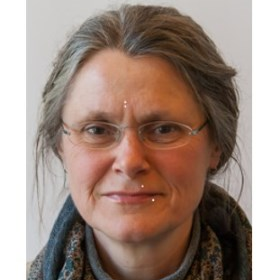Using Residual Materials as Fertilizers
A special issue of Horticulturae (ISSN 2311-7524). This special issue belongs to the section "Plant Nutrition".
Deadline for manuscript submissions: closed (31 July 2023) | Viewed by 5017
Special Issue Editors
Interests: plant nutrition; orphan crops; analytical methods, including HPLC, UHPLC, GC, mass spectrometry, optical spectroscopy, electrophoresis and quantitative PCR; separation and analysis of chiral molecules; enzyme assays; inhibitors
Special Issues, Collections and Topics in MDPI journals
Interests: effectivity of cash crop production (intensity of fertilization and crop protection); tillage effects on crop yield, quality, and soil properties; plant nutrition, especially long-term effects of P and K fertilization; adaptation of crop production to climate change
Interests: nutrient (use) efficiency (particularly P, S, N) in the plant–soil system; effectiveness of mineral and organic fertilizers as a source for the plant P, S and N demand; plant nutritional quality as affected by mineral nutrition; nutrient turnover in the environment
Special Issue Information
Dear Colleagues,
To prepare fertilizers, considerable amounts of inorganic compounds are required, many of which are obtained by mining. Economically recoverable reserves of such resources are finite and, particularly for phosphorus, shortages of these resources are expected in the near future. As potassium is a more abundant element, the situation is less concerning; however, its extraction causes environmental problems. In addition, raw materials, obtained by mining, are often contaminated with undesirable elements, such as heavy metals and radioactive elements. For nitrogen, which is the third key component of fertilizers and is required in huge amounts, there is no risk of shortage of raw materials. However, the synthesis of required compounds, mainly ammonia and nitrates, requires a lot of energy.
Due to the increasing world population, even more fertilizers will be required to maintain high horticultural productivity. Thus, research for techniques that enable alternative materials to be employed, particularly residual materials, as fertilizers is of utmost importance.
This Special Issue aims to collect manuscripts that present novel ideas, strategies and techniques for using or applying residual materials (sewage sludge, sewage sludge ash, fermentation residues, biomass ash, etc.) as fertilizers, or using them as a source for the extraction of plant nutrients. In addition, manuscripts that compare the growth and yield of horticultural crops fertilized with such alternative products, and with conventional fertilizers, are suitable for this Special Issue.
Original manuscripts and review articles that address the aforementioned topics, or similar topics, are highly welcome. For reviews, communication of a brief proposal is recommended prior to manuscript preparation, to avoid overlaps with other submissions.
Prof. Dr. Wilfried Rozhon
Prof. Dr. Annette Deubel
Dr. Sabine von Tucher
Guest Editors
Manuscript Submission Information
Manuscripts should be submitted online at www.mdpi.com by registering and logging in to this website. Once you are registered, click here to go to the submission form. Manuscripts can be submitted until the deadline. All submissions that pass pre-check are peer-reviewed. Accepted papers will be published continuously in the journal (as soon as accepted) and will be listed together on the special issue website. Research articles, review articles as well as short communications are invited. For planned papers, a title and short abstract (about 100 words) can be sent to the Editorial Office for announcement on this website.
Submitted manuscripts should not have been published previously, nor be under consideration for publication elsewhere (except conference proceedings papers). All manuscripts are thoroughly refereed through a single-blind peer-review process. A guide for authors and other relevant information for submission of manuscripts is available on the Instructions for Authors page. Horticulturae is an international peer-reviewed open access monthly journal published by MDPI.
Please visit the Instructions for Authors page before submitting a manuscript. The Article Processing Charge (APC) for publication in this open access journal is 2200 CHF (Swiss Francs). Submitted papers should be well formatted and use good English. Authors may use MDPI's English editing service prior to publication or during author revisions.
Keywords
- fertilizers
- phosphorus
- potassium
- nitrogen
- sulfur
- micro nutrients
- sewage sludge ash
- fermentation residues
- biomass ash







